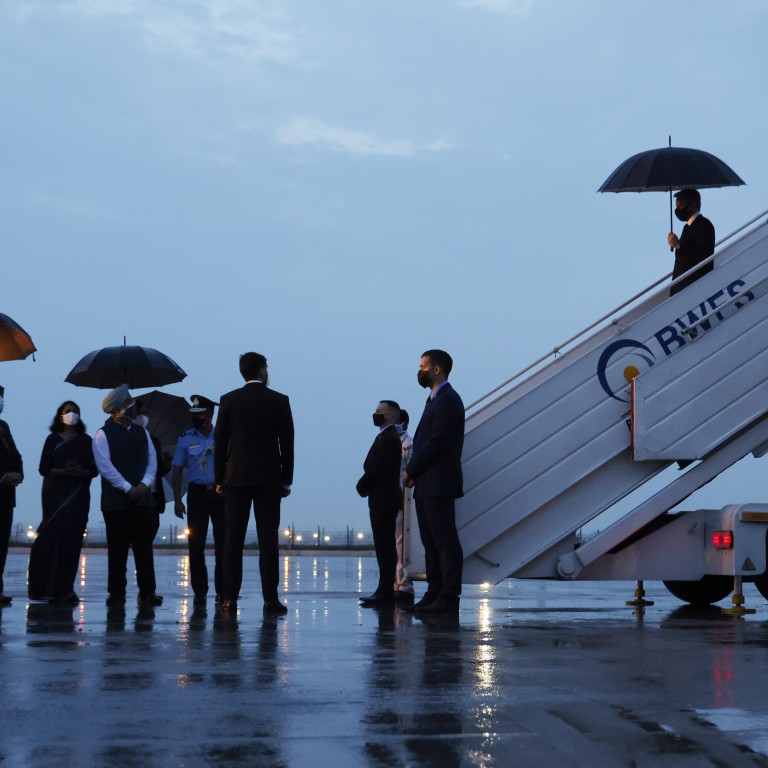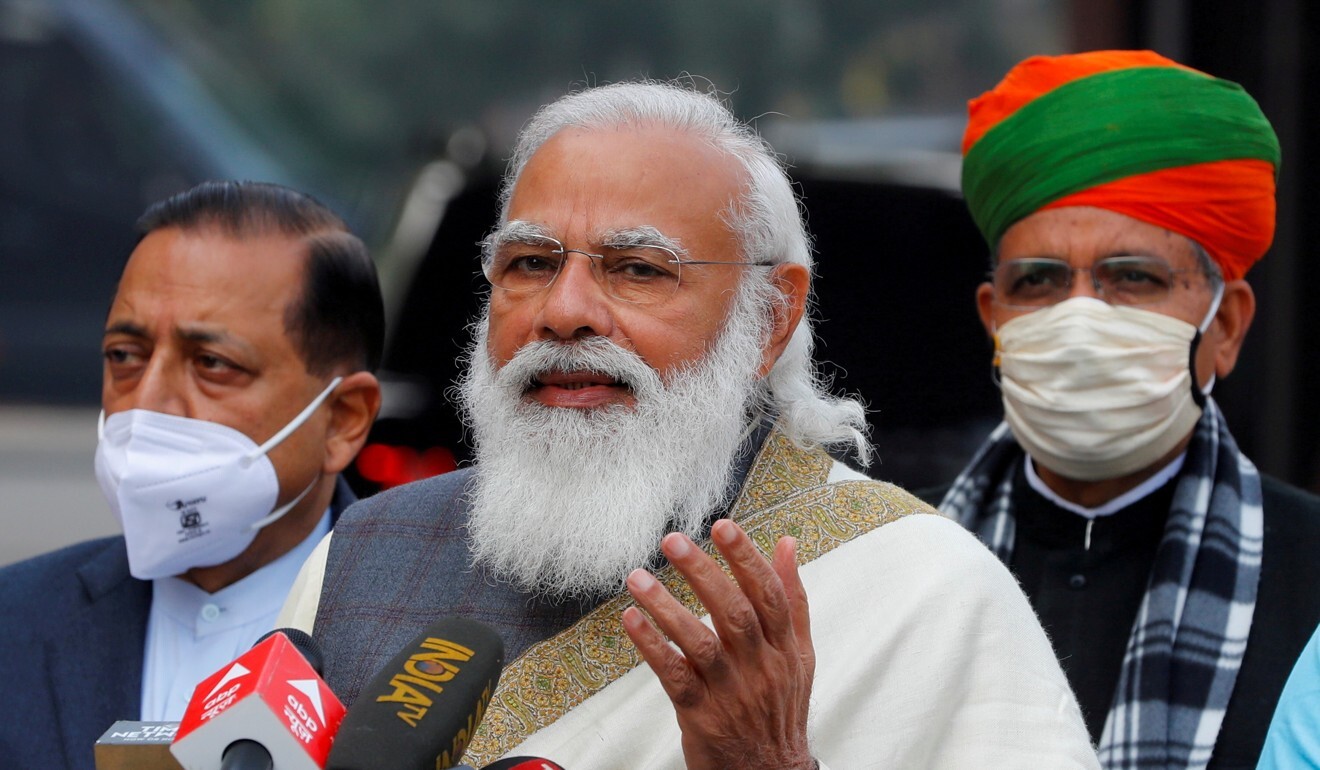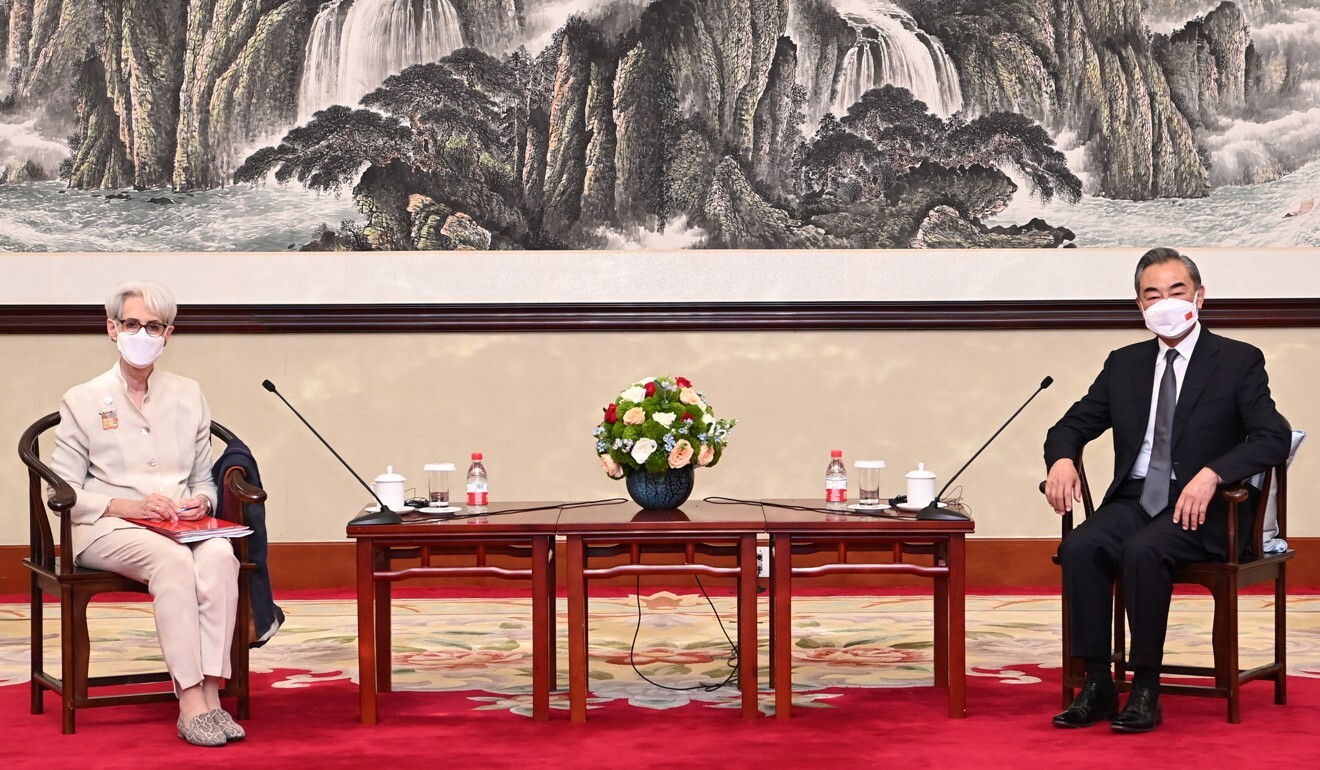
China is seen as topping the agenda as US secretary of state begins India visit
- Antony Blinken’s trip is the latest sign of Washington’s growing embrace of New Delhi as relations with Beijing continue to spiral downward
- The ‘Quad’ security alliance as a counter to China will feature in the talks with his Indian counterpart and Prime Minister Narendra Modi
US Secretary of State Antony Blinken arrived in India on Tuesday for meetings with Prime Minister Narendra Modi and India’s top diplomat, the latest sign of Washington’s growing embrace of New Delhi as relations with Beijing continue to spiral downward.
Blinken will meet on Wednesday with Modi and External Affairs Minister Dr S Jaishankar to discuss, according to the State Department, “Indo-Pacific engagement” and “shared regional security interests”, among other issues.

In March, Biden convened a meeting for the first time with the other leaders of the Quad nations, where they discussed “aggression” and “coercion” by China against members of the group. Beijing has accused the Quad of working to “exaggerate and hype up the so-called ‘China threat’”.
Legislation also passed the US Senate last month to establish an intra-parliamentary working group among the four Quad nations.
The State Department said on Tuesday that the US and India have a “strong strategic partnership founded on shared values and a commitment to a free and open Indo-Pacific region”.
“The United States supports India’s emergence as a leading global power and vital partner in efforts to ensure that the Indo-Pacific is a region of peace, stability, and growing prosperity and economic inclusion,” it said.
In contrast, the administration describes its relationship with Beijing now as one based on “stiff competition”.
India and China, the world’s two most populous countries, have fought a series of deadly border skirmishes over the last year in the Himalayan region that divides the two nations.
Blinken’s meetings come just days after his No 2 at the State Department, Deputy Secretary Wendy Sherman, completed an overseas trip to bolster other US alliances on China’s periphery.
Sherman met with senior officials from Mongolia, Japan and South Korea – including South Korean President Moon Jae-in – before travelling to the Chinese city of Tianjin for discussions with top Chinese diplomats.
The US and China had sparred over diplomatic protocol before those meetings, with Washington seeking greater access to the inner circle of Chinese leader Xi Jinping.

Blinken also spoke on Tuesday by telephone with the prime minister of Nepal, Sher Bahadur Deuba, another of China’s South Asian neighbours.
India’s ministry of external affairs this week called Blinken’s visit “an opportunity to continue the high-level bilateral dialogue and bolster the India-US global strategic partnership”.
“Both sides will review the robust and multifaceted India-US bilateral relations, and potential for consolidating them further,” it said.

